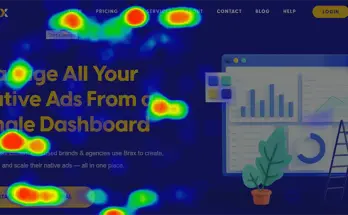The landscape of the present day world of marketing is completely different today than it was just several decades (even years ago). Sure, digital marketing is a relatively new industry, yet, it has already traveled a long way from its humble beginnings. In its early stages, there was a lot of guesswork and intuitiveness involved in a campaign creation, while nowadays, the decision-making process is almost entirely data-driven.
While it still requires a lot of creativity and high-pressure decision-making, it is increasingly becoming a tech-oriented numbers game, which is not an environment everyone can handle. With this in mind, here are a few ways in which digital marketing trends are evolving under the influence of big data analytics in 2018.
1. Proximity-based approach
According to one interesting data find, about 78 of local mobile searches eventually turn into offline sales. In other words, small businesses could use this information in order to target nearby users. This approach guarantees a much higher conversion rate which, in this case, doesn’t merely represent a vanity metric but shows an incredible efficiency rate of your outreach system. John Wannamaker once complained that while he wastes half of the money he invests in marketing; he can never know which half. With a data-based approach to digital marketing, especially with a proximity-based approach, this is no longer true.
While this may seem like a simple numbers game, the fact that your target demographic belongs to the same geographical location bears other advantages. First of all, you get a much easier job at appealing to them, seeing as how you come from a relatively similar (if not the same) background. Second, it allows you to market your company as a small local business, concerned about the plights of the local community and be completely genuine about it. In this way, you not only gain on sales and outreach efficiency by also stand to make a solid reputation.
2. Personalized user experience
In the previous section, we went to lengths to discuss how localized ad targeting affects your campaign’s success rate, however, this is just a minor part of the overall personalization of the user experience. In the past, marketers believed that a massive division in the marketing outreach used to come down to B2B (business to business) vs. B2C (business to customer). Nowadays, a more intimate approach P2P (person to person) approach is considered to be superior to both. The downside of this approach lies in the fact that it requires you to know all the parties you’re reaching out to on a personal level. With big data analytics on your side, such a thing might be possible.
A lot of studies deal with patterns of user behavior, which makes them come to various conclusions like the left side of the screen receiving more attention than the right one or how different button colors affect conversion rates. On the other hand, statistics can be deceiving, which means that while focusing on the bigger picture, you might forget that each of your users has their own individual preferences. For a human marketer, such an overwhelming amount of information and possibilities would be impossible to keep a track of but for an analytical software powered by a huge database, the rules are different.
3. Data-driven web design
In the previous section, we mentioned various patterns of user behavior, however, one of the things that need to be taken into consideration is the fact that most of these are quite situational. For instance, design trends for the homepage of a funeral home wouldn’t necessarily be appropriate for an event planning company. This starts with visual elements like the choice of a color pallet, logo placement and the tone of the featured content. On the other hand, this puts layman designers at a disadvantage or forces them to narrowly specialize on a single niche. It also leads towards greater interests of even the smallest of businesses and one-person startups for the services of experts from a renowned website development company rather than turning towards freelancers.
4. AI software
Analytics is a function we mentioned several times over, yet, we still failed to mention one incredibly important trend. Without AI software, data analysis on such a scale would be completely impossible. Think about it, when you have sensors and user-generated content (UGC) in such volumes, it’s incredibly difficult just to differentiate useful from useless data (although some may argue that there’s no such thing as useless data). With AI software, you can constantly have access even to the data you don’t find useful at the moment, which means that you can turn to them later on, should a new trend emerge. Sure, some of the best human marketers create alert systems based on which they might conceive a similar strategy, yet, the efficiency gap is simply staggering in favor of the AI software.
5. IoT as data gathering tool
When speaking about big data, it’s important to keep in mind just how hard it is to gather such vast quantities of actionable information by conventional means. This is especially true for private data, which can only be surveyed in the offline world. Now, one of the things that keeps a lot of people awake at night, yet, thrills all digital marketers out there is the fact that the line between online and offline world is getting blurrier by the minute. With the trend of IoT on your side, you can finally get to understand not just what certain products are used for but the way in which they are used, as well. Aside from providing a massive boon for the world of marketing, it is also a potent development tool that can help forward entire industries.
As you can see, there are so many digital marketing trends under the influence of big data analytics that it becomes impossible to remain competitive in this industry while ignoring them. In the past, there was a joke that big data is like teenage sex because everyone talks about it, nobody really knows how to do it, everyone thinks everyone else is doing it, so everyone claims they are doing it. This is something that will soon have to change for good.





Thanks for such a valuable informative post on Big Data Analytics. By going through it most of my ongoing doubts regarding Big Data Analytics have been cleared. Looking forward for more of such informative posts.
For more details on Big Data Analytics Training In Hyderabad, please visit:
https://www.kellytechno.com/Hyderabad/big-data-analytics-training-in-hyderabad
Excellent and very cool idea and great content of different kinds of the valuable information’s.